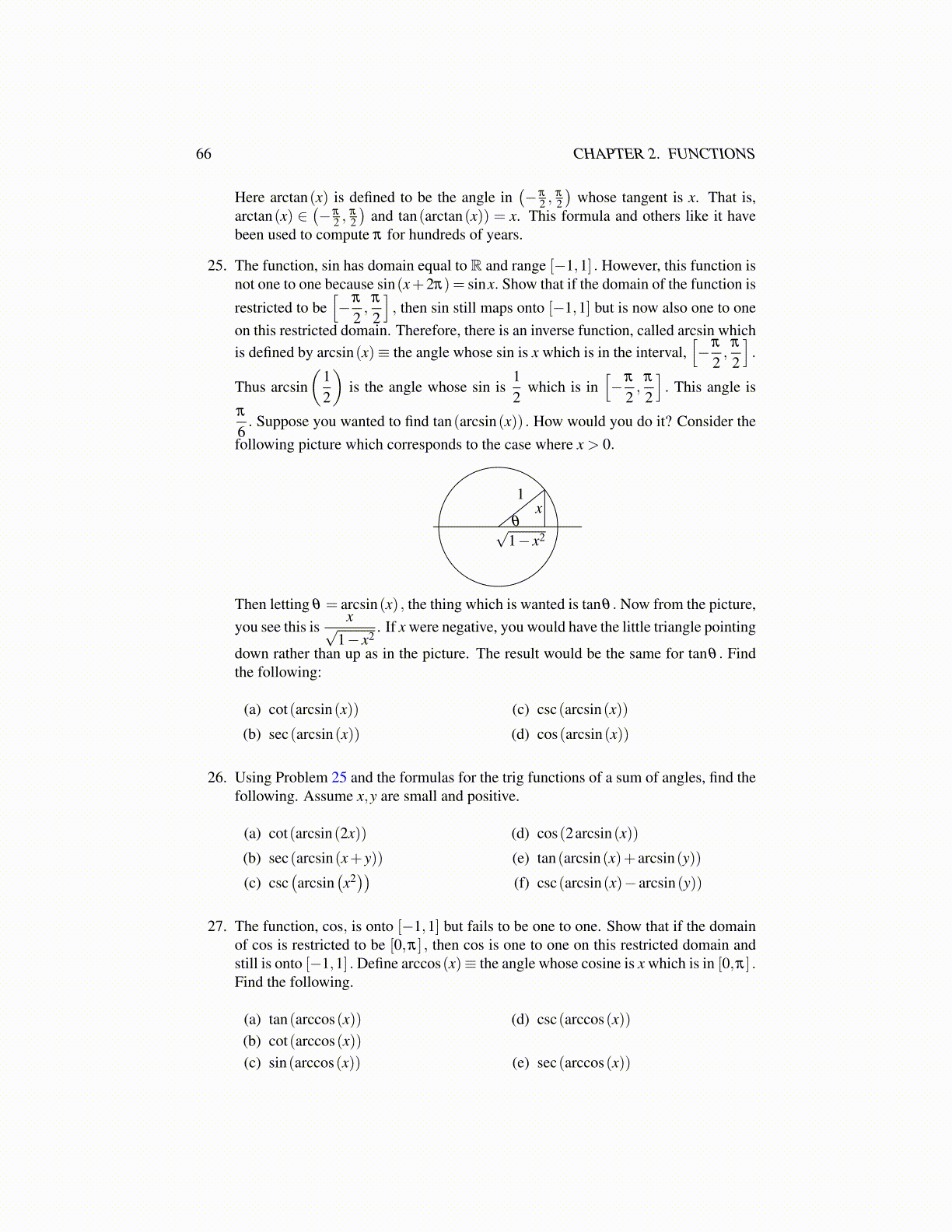
66 CHAPTER 2. FUNCTIONS
Here arctan(x) is defined to be the angle in(−π
2 ,π
2
)whose tangent is x. That is,
arctan(x) ∈(−π
2 ,π
2
)and tan(arctan(x)) = x. This formula and others like it have
been used to compute π for hundreds of years.
25. The function, sin has domain equal to R and range [−1,1] . However, this function isnot one to one because sin(x+2π) = sinx. Show that if the domain of the function is
restricted to be[−π
2,
π
2
], then sin still maps onto [−1,1] but is now also one to one
on this restricted domain. Therefore, there is an inverse function, called arcsin whichis defined by arcsin(x)≡ the angle whose sin is x which is in the interval,
[−π
2,
π
2
].
Thus arcsin(
12
)is the angle whose sin is
12
which is in[−π
2,
π
2
]. This angle is
π
6. Suppose you wanted to find tan(arcsin(x)) . How would you do it? Consider the
following picture which corresponds to the case where x > 0.
θ√1− x2
x1
Then letting θ = arcsin(x) , the thing which is wanted is tanθ . Now from the picture,you see this is
x√1− x2
. If x were negative, you would have the little triangle pointing
down rather than up as in the picture. The result would be the same for tanθ . Findthe following:
(a) cot(arcsin(x))
(b) sec(arcsin(x))
(c) csc(arcsin(x))
(d) cos(arcsin(x))
26. Using Problem 25 and the formulas for the trig functions of a sum of angles, find thefollowing. Assume x,y are small and positive.
(a) cot(arcsin(2x))
(b) sec(arcsin(x+ y))
(c) csc(arcsin
(x2))
(d) cos(2arcsin(x))
(e) tan(arcsin(x)+ arcsin(y))
(f) csc(arcsin(x)− arcsin(y))
27. The function, cos, is onto [−1,1] but fails to be one to one. Show that if the domainof cos is restricted to be [0,π] , then cos is one to one on this restricted domain andstill is onto [−1,1] . Define arccos(x)≡ the angle whose cosine is x which is in [0,π] .Find the following.
(a) tan(arccos(x))(b) cot(arccos(x))(c) sin(arccos(x))
(d) csc(arccos(x))
(e) sec(arccos(x))